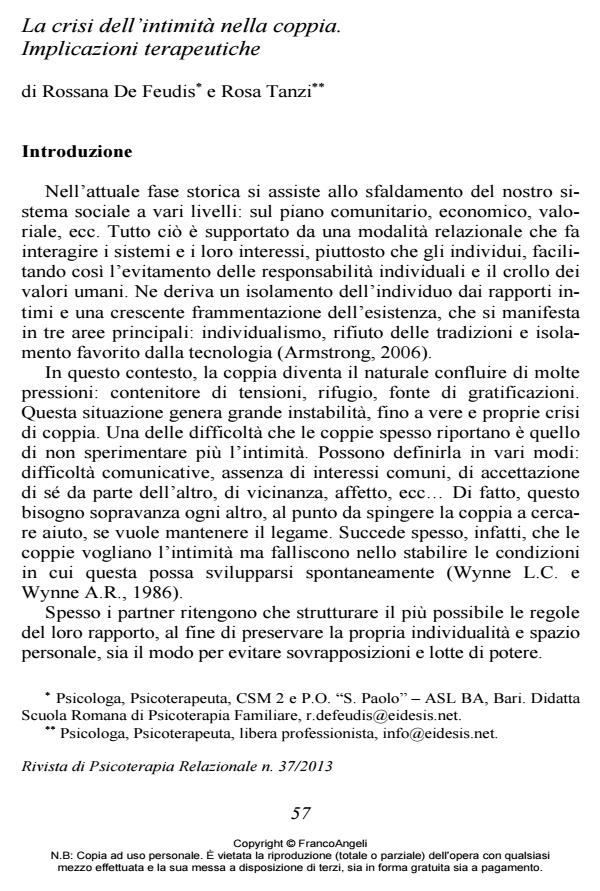The crisis of intimacy in the couple relationship. Therapeutic implications
Journal title RIVISTA DI PSICOTERAPIA RELAZIONALE
Author/s Rossana De Feudis, Rosa Tanzi
Publishing Year 2013 Issue 2013/37
Language Italian Pages 20 P. 57-76 File size 2881 KB
DOI 10.3280/PR2013-037003
DOI is like a bar code for intellectual property: to have more infomation
click here
Below, you can see the article first page
If you want to buy this article in PDF format, you can do it, following the instructions to buy download credits

FrancoAngeli is member of Publishers International Linking Association, Inc (PILA), a not-for-profit association which run the CrossRef service enabling links to and from online scholarly content.
Purpose of this paper is to explore the relevance of intimacy both as a subjective experience and as a mode of relating. The complexity of the phenomenon calls for a multiplicity of perspectives, in order to delineate a definition of intimacy. The meaning of intimacy for human beings is analyzed as well as the effects that its absence may have for the couple relationship. An excerpt from a couple therapy provides a clinical example illustrating the function that the experience of intimacy may have for both the couple and the therapeutic relationship.
Keywords: Intimacy, couple relationships, disfunctional relationships, couple therapy
Rossana De Feudis, Rosa Tanzi, La crisi dell’intimità nella coppia. Implicazioni terapeutiche in "RIVISTA DI PSICOTERAPIA RELAZIONALE " 37/2013, pp 57-76, DOI: 10.3280/PR2013-037003